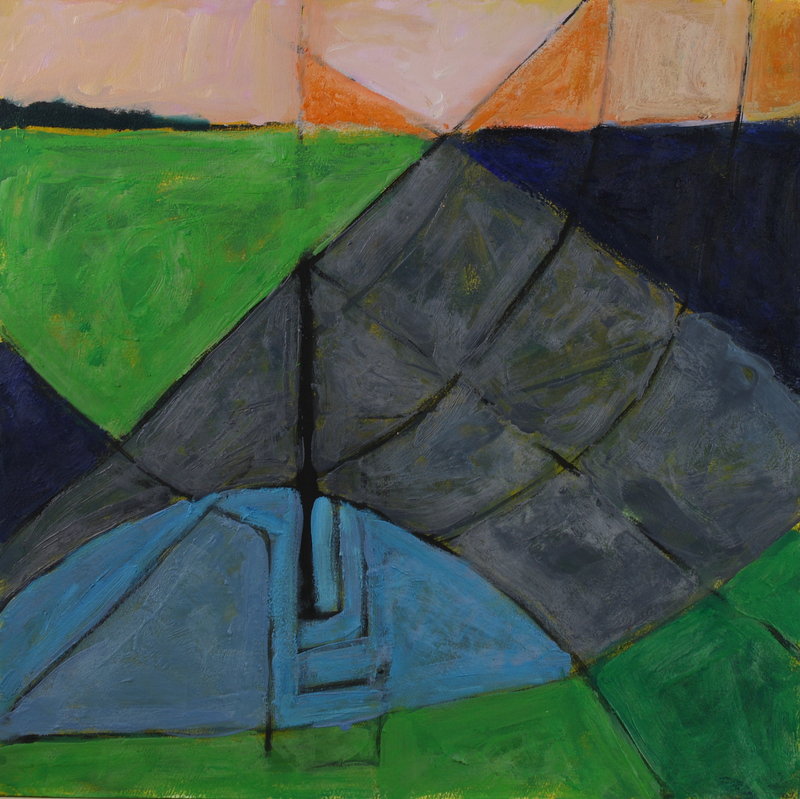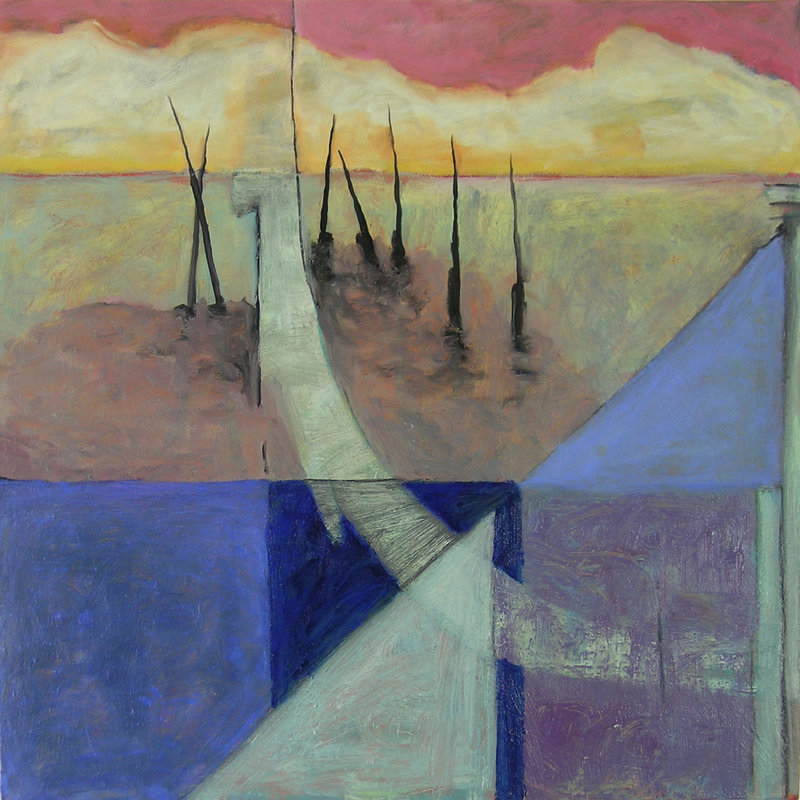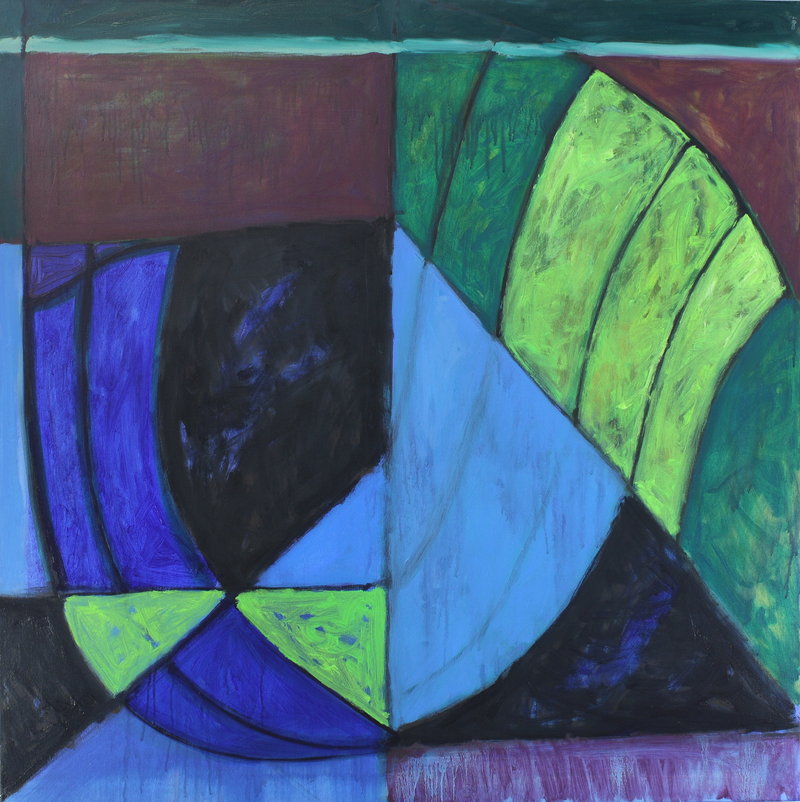Maine culture is defined by its relationship to our coast — gorgeous and bountiful but craggy and mortally tough. Our landscape is transcendentally beautiful, yet more often than not, impenetrably dense.
Maine soars as a source of great paintings of Western culture. But the vast majority of these paintings are defined by the distance of a scenic viewpoint.
Maybe because the standard understanding of our landscape tradition compliments our painters for their on-site heartiness, we too often dismiss or undervalue the artists who seek the deeper visual logic of Maine scenic culture.
Richard Keen, showing at Elizabeth Moss Galleries, is a rare painter these days. At his best, Keen achieves architectural structure, abstract appeal and an unusual sense of formal satisfaction. When he fails — which isn’t often — he still succeeds at revealing the layers of thought, process and technique that go into all of his work.
The obvious reference for Keen is Richard Diebenkorn, the leading figure of the Bay Area Figurative Movement, who died in 1993. I think Keen should be commended for so directly taking on the issues of painting proffered by Diebenkorn, since they work so well for Maine nautical culture.
Diebenkorn’s Ocean Park series featured a very high horizon line with loose but geometrical areas taking form in the bulk of the lower and more abstract areas. The top-heavy density of the California painter’s sophisticatedly abstracted landscapes plays to the idea of the viewer’s head with the broader surfaces below mirroring the viewer’s body (which ties his work directly to Abstract Expressionism’s acknowledgement of the viewer’s body).
Keen, on the other hand, uses this space to bring another world to life: Slivers of landscape hover over the depths of the sea. Rather than a physical gesture, however, Keen uses this more as a mental metaphor with the above-water consciousness floating over vast, subconscious reserves.
In his earlier work, “Weir Arrangement 162 with Hull,” only about one-fifth of the image is the pink sky and yellow-puffed clouds above the horizon line. The horizon is broken by the wooden stakes of a fish trap and a lightly rendered cross-section of a wooden hull. The lower part of the painting is pure geometrical abstraction.
It is a handsome painting, but busy and so complicated that its insights are somewhat lost in a puzzle.
Keen’s more recent works are both more handsome and satisfying. “Sea Geometry No. 98,” for example, again has just a sliver of a landscape at the top of the painting. Lines from a cross-section of a boat’s hull divide the entire piece with cubist logic. The horizon line is distinguished by warm colors above and cool below.
Keen has jettisoned any reference to the surface of the water other than the horizon line, so the image sits on the surface of the painting like a map or a blueprint.
What makes Keen’s work so remarkable is its thoughtful logic. While most of the paintings are divided with landscape lines and the geometrical curves of boat hulls, he brings these forms together through observation.
Whereas we so often see distinctions between the forms of human culture and nature, Keen shows us that the forms of boats in fact admire and follow nature.
With his recent work so unified, Keen leads us to see the visual connections between our coast and the organic logic of Maine’s nautical culture.
The result is his strongest body of paintings — and what I think is the most handsome show I have seen at Elizabeth Moss.
Freelance writer Daniel Kany is an art historian who lives in Cumberland. He can be contacted at: dankany@gmail.com
Send questions/comments to the editors.




